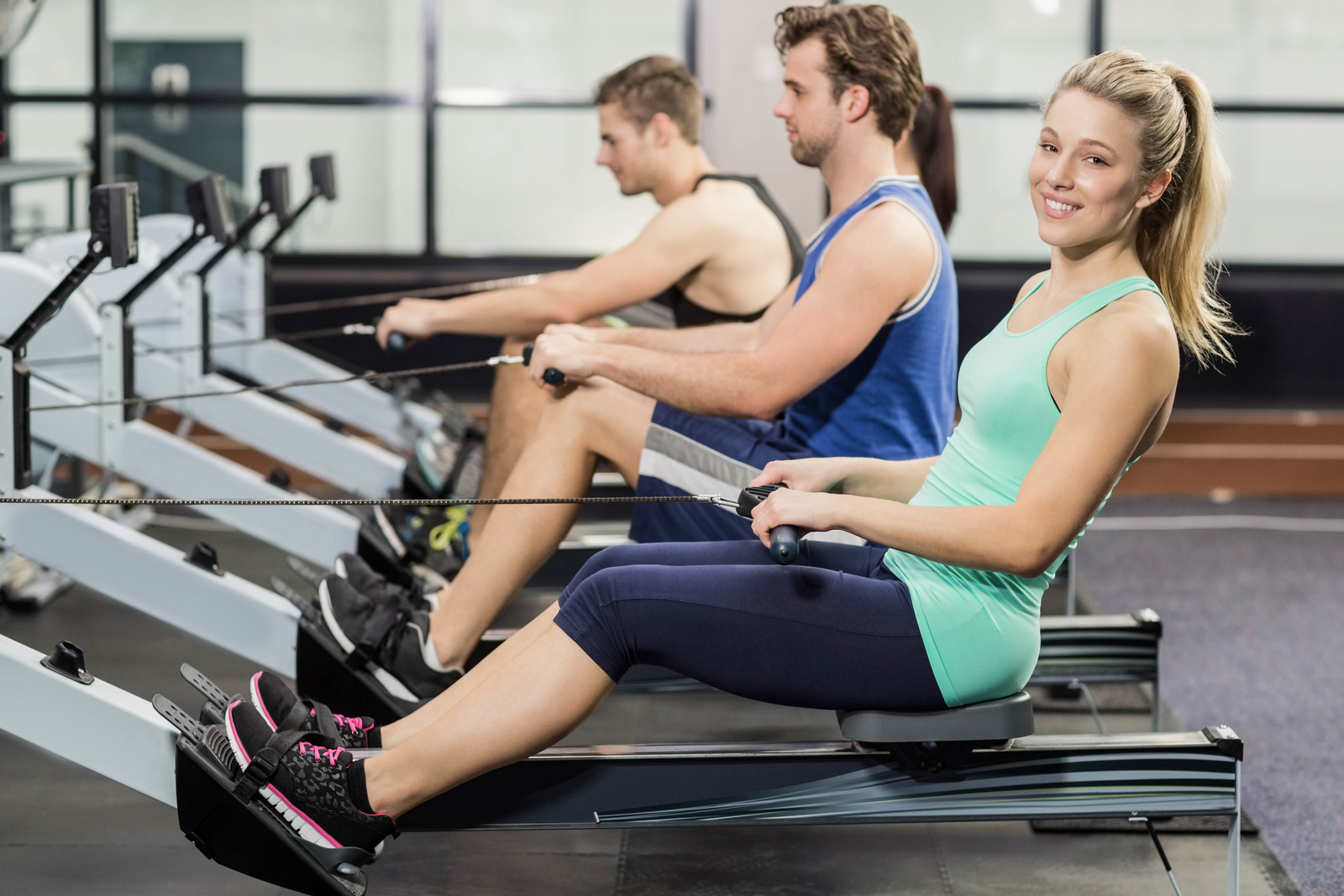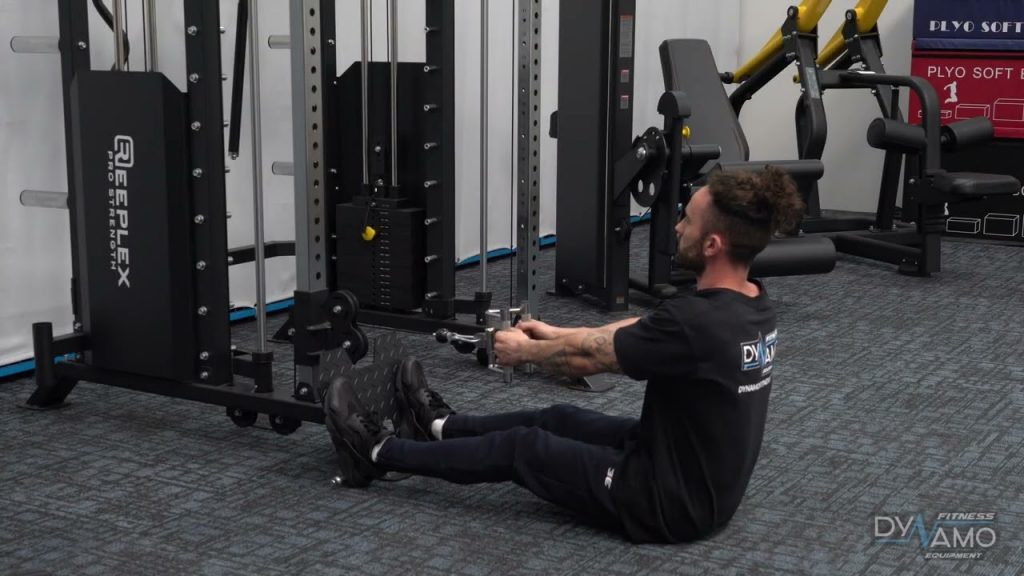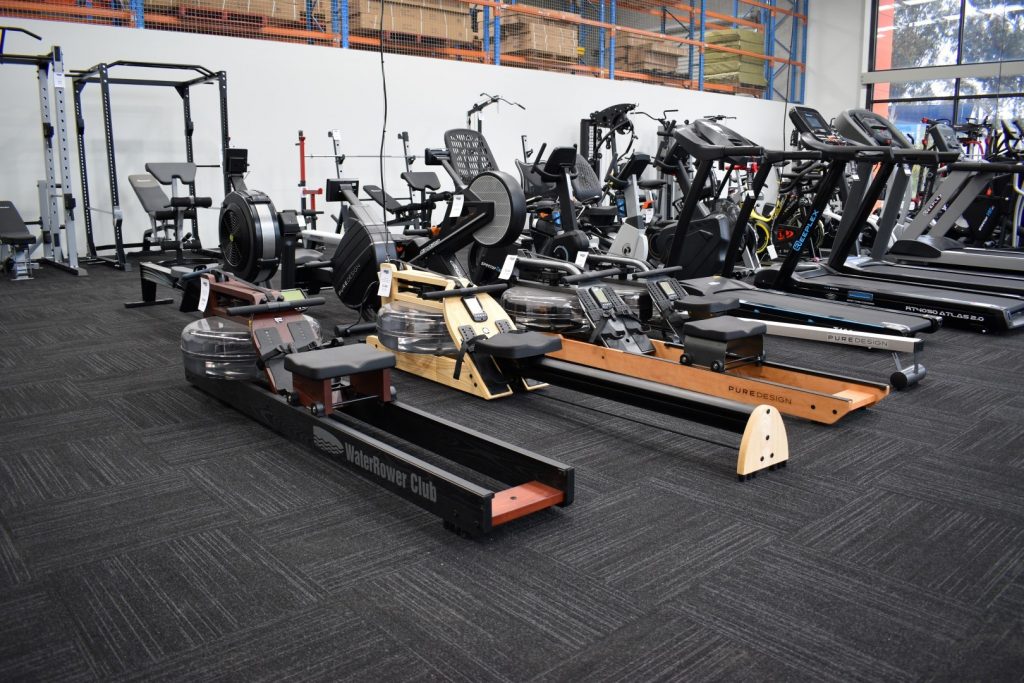
The Right Techniques on Seated Row Machines to Achieve Fitness
Maximize your workout potential with the seated row machines. Achieving optimal results on this essential gym equipment is all about mastering proper technique and posture. By learning the right techniques, beginners can start their strength training fitness journey on the rowing machine with confidence. This blog post will uncover the secrets to unlocking the benefits of this exercise. Whether you’re looking to build strength or improve your overall fitness, understanding how to use the seated row machine correctly is key. Get ready to take your workouts to new heights as we delve into the world of rowing exercises.
Read Also: Cable Seated Row
Benefits of Incorporating the Seated Row Machine into a Workout Routine
Strengthen and Tone Your Back Muscles Effectively
The seated row machine, often requiring assembly upon purchase, is an excellent tool for targeting and strengthening your back muscles. By using proper technique and maintaining good posture, you can effectively engage your lats, rhomboids, and traps. This exercise helps to build muscle mass in your upper back, giving you a more defined and toned appearance, showcasing the elite muscle gains achievable with the right piece of equipment.
Improve Your Posture by Targeting Key Muscle Groups
One of the key benefits of using the seated row machine is its ability to improve your posture. As you perform rows on this gym equipment, it activates muscles that are crucial for maintaining proper alignment. By strengthening your back muscles, such as the erector spinae and rear deltoids, you can alleviate postural issues caused by weak or imbalanced muscle groups.
Enhance Overall Upper Body Strength and Stability
Regular use of the seated row machine can lead to significant improvements in upper body strength and stability. This exercise engages multiple muscle groups simultaneously, including the biceps, forearms, shoulders, and core, substantially aiding in building depth in the middle back. As these muscles work together during each rowing motion, they become stronger over time, allowing you to perform other exercises with greater ease.
Enjoy a Full-Body Workout Experience
The seated row machine offers a full-body workout experience that engages both your upper and lower body. While primarily targeting the back muscles, it also involves your legs as they provide stability during the movement. This means that you’re not only working on building a strong back but also getting additional benefits for other muscle groups.
Incorporating the seated row machine into your workout routine can bring about numerous advantages. From strengthening and toning your back muscles to improving posture and enhancing overall upper body strength and stability – this versatile equipment offers a comprehensive workout experience for individuals at any fitness level.
Read Also: How to Lift Safely: Protecting Your Upper Body
Importance of Maintaining Proper Posture on the Seated Row Machine
Maintaining proper posture on the seated row machine is crucial for several reasons, including preventing the typical wear and tear associated with repetitive movements. Strain and injury can be significantly reduced by using machines with proper pad, now featuring enhanced rubber and steel for improved durability and user comfort during exercises.ding and ensuring the load is appropriate for your fitness level. Practicing good posture on equipment with an ergonomically designed chest pad promotes spinal health and protects your spine from potential damage. Let’s dive into why maintaining the right techniques and proper posture on the seated row machine is so important.
Avoid Unnecessary Strain and Injury
When using the seated row machine, it’s essential to maintain correct posture to prevent strain or injury. By keeping your body in alignment, you distribute the workload evenly across your muscles instead of placing excessive stress on one particular area. This reduces the risk of muscle imbalances or overuse injuries, particularly when exercises are performed on loaded machines.
Maximize Muscle Activation and Engagement
Proper posture allows for optimal muscle activation and engagement while using the seated row machine. When you align your body correctly, you ensure that the targeted muscles are effectively recruited during each repetition. This maximizes the effectiveness of your workout, helping you achieve better results, especially with machines that have adjustable hand grips.
Protect Spinal Health
Practicing good posture throughout each exercise on the seated row machine is vital for protecting your spine. Maintaining a neutral spine position helps distribute forces evenly along your vertebral column, reducing pressure on individual vertebrae. This can help prevent spinal misalignments or herniated discs that may result from poor form.
Ensure Efficient Movement Patterns
By prioritizing correct form and technique, you promote efficient movement patterns while using the seated row machine. Proper alignment allows for smooth and controlled movements, minimizing wasted energy or unnecessary strain on other muscles. This ensures that you get the most out of each repetition and achieve optimal results from your plate load workout.
Remember, maintaining proper posture on adjustable seated row machines is key to maximizing benefits while minimizing risks. So make sure to prioritize correct form and technique throughout your workouts!
Proper Adjustment Technique for Using the Seated Row Machine

To ensure an effective and safe workout on the seated row machine, it’s crucial to use the right techniques and maintain proper posture. Here are some key points to keep in mind:
Adjust Seat Height, Foot Placement, and Handle Position
Before starting your workout, take a moment to adjust the seat height so that your feet can comfortably rest on the footplates. Ensure that your knees are slightly bent and maintain a neutral spine throughout the exercise. Position the handles at a level where you can fully extend your arms without straining.
Retract Your Shoulder Blades and Pull with Control
Begin each repetition by retracting your shoulder blades, pulling them back and down towards each other, ensuring the heavy load is manageable with proper form. This helps activate the muscles in your upper back effectively. With a controlled motion, pull the handles towards your chest while keeping your elbows close to your body.
Maintain Proper Form
As you perform seated rows, it’s important to maintain proper form to avoid injury and maximize results:
-
Keep a slight bend in your knees throughout the exercise.
-
Avoid excessive leaning or jerking movements; instead, focus on smooth and controlled motions.
-
Engage your core muscles by maintaining a neutral spine position.
-
Breathe steadily throughout each repetition, making sure to adjust the machine’s pin for a comfortable resistance level.
Gradually Increase Resistance Levels
As you become more comfortable with using the seated row machine, gradually increase the resistance levels to challenge yourself. However, always prioritize maintaining proper form over lifting heavier weights.
Remember: using the correct technique not only minimizes the risk of injury but also ensures that you target the intended muscle groups effectively for optimal results, such as when utilizing a lat pulldown or seated row machine that’s fully adjustable.
Preventing Back Pain During Seated Cable Row Exercises
To ensure a safe and effective workout on the seated row machine, it’s essential to focus on the right techniques and maintain proper posture. Here are some tips to prevent back pain during seated cable row exercises: always ensure the machine’s seat and hand grips are adjusted to your size for optimal contact.
Warm Up Adequately
Before starting any exercise session, make sure to warm up adequately. This helps prepare your muscles for action and reduces the risk of injury. Perform dynamic stretches and light cardio exercises to increase blood flow to your muscles.
Engage Core Muscles
Engaging your core muscles throughout each repetition is crucial for providing stability and support for your lower back area, especially when using free weights. Imagine pulling your belly button in towards your spine as you perform the exercise. This will help protect your back from unnecessary strain.
Maintain an Upright Position
When using the seated row machine, it’s important to maintain an upright position without rounding or arching your back excessively. Keep a neutral spine by sitting tall with your shoulders relaxed and down. Avoid hunching forward or leaning backward, as this can put undue stress on your back.
Build Depth in your Middle Back and Lower Lats
Listen carefully to your body while performing exercises on a fully-adjusted seated row machine to eliminate any discomfort. If you experience any discomfort or pain in your back, it’s essential to adjust the weight or intensity accordingly. Pushing through pain can lead to further injury, so be mindful of what feels right for you.
By following these tips and maintaining proper form, you can minimize the risk of back pain during seated cable row exercises. Remember that everyone’s body is different, so it’s important to listen to what feels comfortable for you personally.
Tips and Tricks for a Successful Seated Cable Row Workout
Squeeze Those Shoulder Blades
To get the most out of your seated cable row workout, focus on squeezing your shoulder blades together at the end of each pulling motion. This will fully engage your back muscles and help you build strength and definition. Imagine trying to hold a pencil between your shoulder blades as you pull the cable towards you.
Breathe Properly for Maximum Efficiency
Proper breathing is essential during any exercise, including seated cable rows. Remember to exhale during the exertion phase when you are pulling the cable towards your body, and inhale during the release phase as you extend your arms forward again. This rhythmic breathing pattern will help you maintain control and maximize efficiency throughout your workout.
Mix It Up with Variations
Don’t be afraid to mix up your seated cable row routine by incorporating different variations to widen or narrow your grip according to what suits your body type best. Try using an underhand grip instead of an overhand grip to target different areas of your back muscles. You can also try single-arm rows to isolate each side of your back individually. These variations will challenge different muscle groups and keep your workouts interesting.
Track Your Progress for Continuous Improvement
To see progress in your seated cable row workouts, it’s important to track and monitor your performance over time. Gradually increase weights, repetitions, or sets as you become stronger and more comfortable with the exercise. Keeping a record of these improvements will not only motivate you but also ensure that you are consistently challenging yourself.
Exploring Variation: Wide Grip Cable Row Technique
In addition to the traditional seated row machine, another effective exercise variation is the wide grip cable row technique. This technique involves using a wide grip handle attachment to target different muscle groups, specifically the lats. By adjusting the seat position and handle height accordingly, you can accommodate wider hand placement during wide grip cable rows.

To perform this exercise with proper form, it’s essential to maintain an upright posture throughout. Instead of relying on excessive arm strength, focus on pulling from the elbows. This will ensure that you engage your back muscles effectively and avoid straining your arms.
One of the benefits of this variation is that it allows for a greater range of motion compared to other rowing exercises. The wide grip enables you to fully extend your arms and squeeze your shoulder blades together at the end of each repetition. This full range of motion helps in targeting and strengthening different areas of your back.
Experimenting with different grip widths can also be beneficial when performing wide grip cable rows. You can try varying your hand placement to find what feels most comfortable and effective for targeting specific areas of your back. Some individuals may find a slightly wider or narrower grip more suitable for their body mechanics and goals.
Remember, when using the seated row machine or any other equipment, always adjust the weight stack or resistance band according to your fitness level and goals. Start with a manageable weight or resistance and gradually increase as you become stronger and more comfortable with the exercise.
Shop Row Machines and Weight Plates in Australia
Congratulations on making it this far! By now, you have learned about the numerous benefits of incorporating the seated row machine into your workout routine. You also understand the importance of maintaining proper posture and technique to prevent back pain during your exercises. But don’t worry, we’re not done just yet!
To truly master the seated row machine, it’s crucial to explore variations like the wide-grip cable row technique. This variation allows you to target different muscles and challenge yourself in new ways. Remember, Rome wasn’t built in a day, so take your time to perfect your form and gradually increase resistance as you grow stronger.
Now that you have all the tools at your disposal, it’s time to put them into action. Head over to our mega gym equipment stores located in Sydney, Melbourne & Perth, or explore our wide range of gym equipment online. For more information or a personalized training quote, contact us. Shop from the best rowing machines with confidence, and unleash your full potential. Remember to listen to your body, push yourself within reason, and enjoy the journey towards a stronger back and improved overall fitness.
FAQs
Can I use the seated row machine if I have a history of lower back pain?
If you have a history of lower back pain or any existing injuries or conditions, it’s crucial to consult with a healthcare professional before using the seated row machine or any exercise equipment. They can provide personalized guidance based on your specific needs and help you determine whether it’s safe for you to incorporate this exercise into your routine.
How often should I perform seated cable rows?
The frequency of performing seated cable rows depends on various factors such as your fitness level, goals, and recovery ability, along with the specific installation and adjustments of the seated row machine. As a general guideline, aim for two to three sessions per week with at least one day of rest between each session. However, always listen to your body and adjust accordingly – if you feel excessively sore or fatigued after each session, consider reducing the frequency or intensity.
Is there an ideal grip width for the seated row machine?
The ideal grip width on the seated row machine varies from person to person and depends on your goals. A wider grip can target the upper back and shoulders more, while a narrower grip places greater emphasis on the middle back muscles. Experiment with different grip widths to find what feels most comfortable and effective for you.
Can I use resistance bands instead of a cable machine for seated rows?
Yes, resistance bands can be an excellent alternative to a cable machine for seated rows, especially when the row machine is fully adjustable to accommodate varying levels of strength training. They offer similar benefits and allow you to perform this exercise at home or anywhere else. Choose bands with appropriate resistance levels to challenge yourself effectively, and ensure that they are securely anchored before starting your workout.
How long should I hold the contraction during seated rows?
To maximize the effectiveness of each repetition, aim to hold the contraction (when pulling the handles towards your body) for one to two seconds. This pause allows you to engage and activate the targeted muscles fully. However, avoid holding your breath during this phase – remember to breathe naturally throughout the movement.
